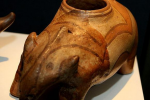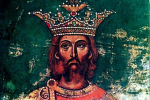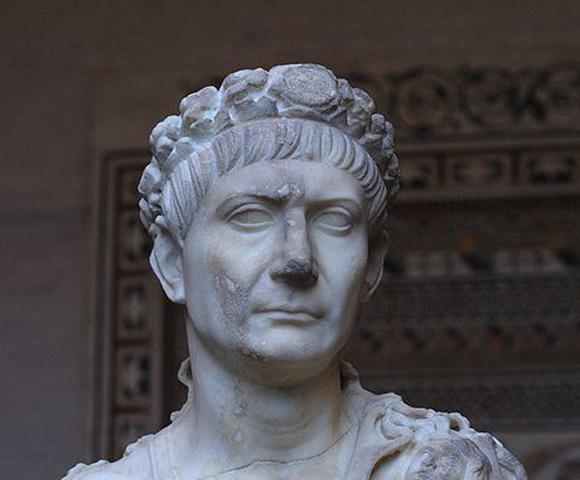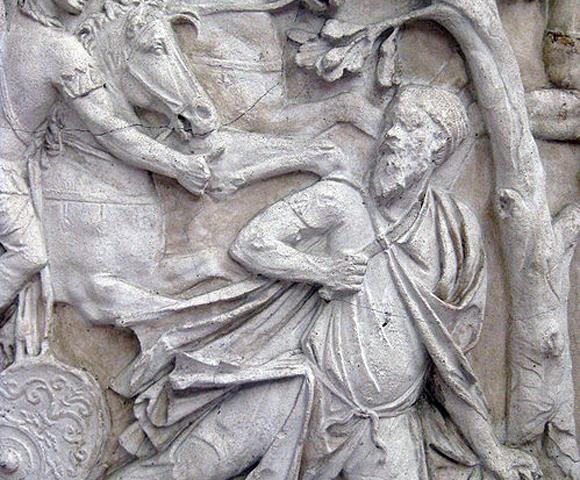The earliest written evidence of people living in the territory of the present-day Romania, the Geto-Dacians, comes from Herodotus, in his 440 BC book IV of his Histories. Territories located north of the Danube were inhabited by Dacian tribes, including Carpi, Apuli, Tyragetae, Costoboci, Burs, Krobyzoi, Suci and other peoples. Dacians, like the majority of Thracians, were henotheists, the main deities being: Zalmoxis, Gebeleizis, Bendis, Derzelas and Kotys. Dacians, considered a part of the Getae tribes mentioned by Herodotus, were a branch of Thracians who inhabited Dacia (corresponding mostly to present-day Romania). He describes the Getae as “the most brave and honest amongst all Thracians”. The Dacian kingdom reached its peak between 82–44 BC during the reign of Burebista.
Over the next century, relations between the Dacian tribes and Rome were relatively peaceful, however the ascent to the throne of Rome of emperor Titus Flavius Domitianus (81 AD) damaged relations between the Roman Empire and Dacia. He led military campaigns in the region between 87–88 AD at Tapae. Roman incursions continued in 101–102 and 105–106 under Trajan, who successfully defeated Dacia and annexed it to the vast Roman Empire. The Dacian population subsequently underwent ethno-linguistic process of Romanization and Dacia itself became an imperial province.
Due to Dacia’s rich ore deposits (especially gold and silver), Rome brought colonists from all over the empire. This brought Vulgar Latin and started a period of intense romanization that would give birth to the Proto-Romanian language. During the 3rd century AD, with the invasions of migratory populations, the Roman Empire was forced to pull out of Dacia around 271 AD, making it the first province to be abandoned.
After the Roman army and administration left Dacia, the territory was invaded by various migratory populations including Goths, Huns, Gepids, Avars,Bulgars,Pechenegs and Cumans. Several competing theories have been generated to explain the origin of modern Romanians. Linguistic and geo-historical analysis tend to indicate that Romanians have coalesced as a major ethnic group both South and North of the Danube in the regions previously colonized by Romans.
Related Listing
-

Prehistory
Some 42,000-year-old human remains were discovered in the "Cave With Bones", and being Europe’s ...
-

Middle Ages
Gesta Hungarorum, also known as the Chronicle of Anonymus, mentioned the existence of ...
-

Independence and monarchy
During the period of Austro-Hungarian rule in Transylvania and Ottoman suzerainty over Wallachia ...











Recent Reviews